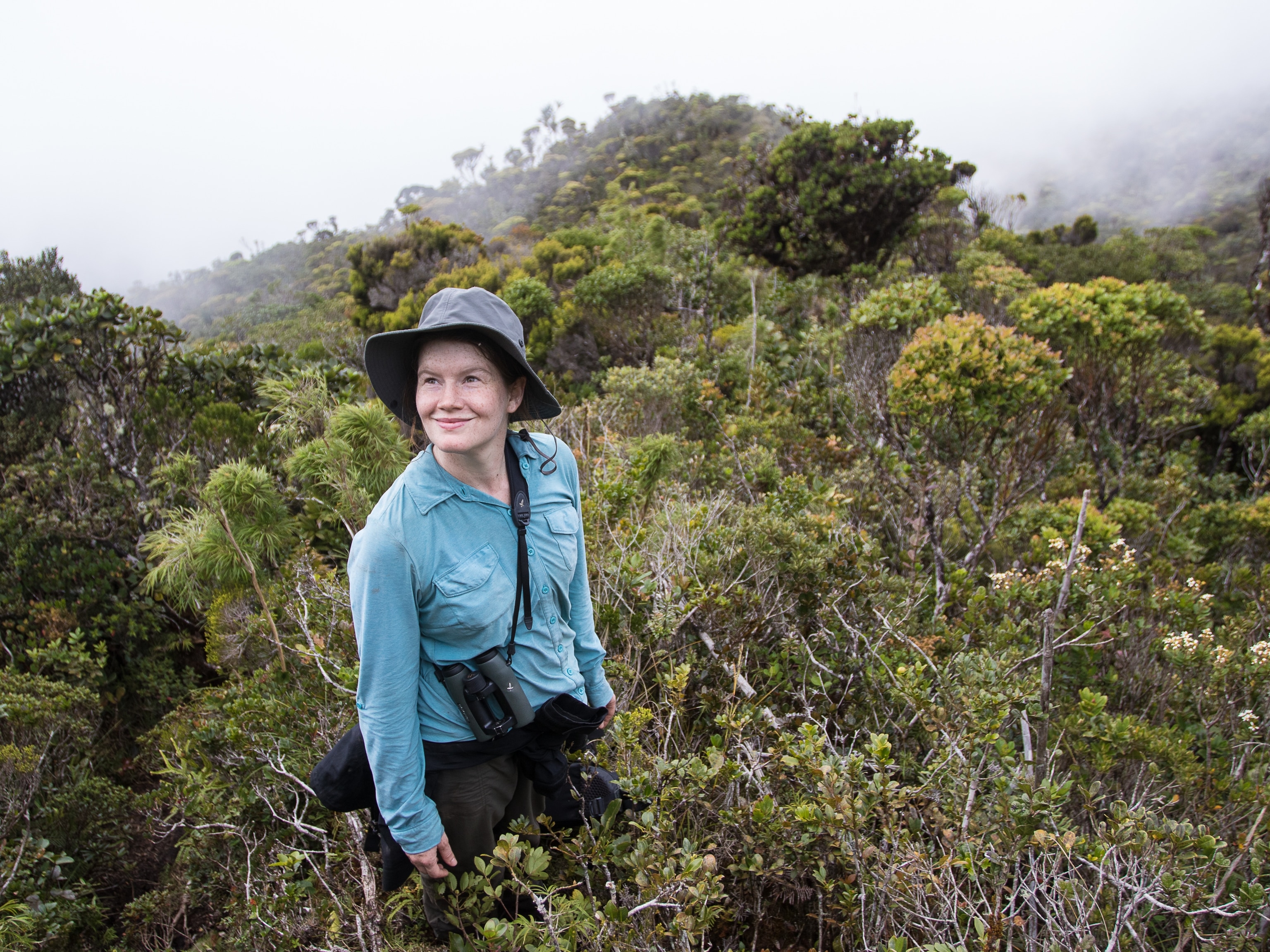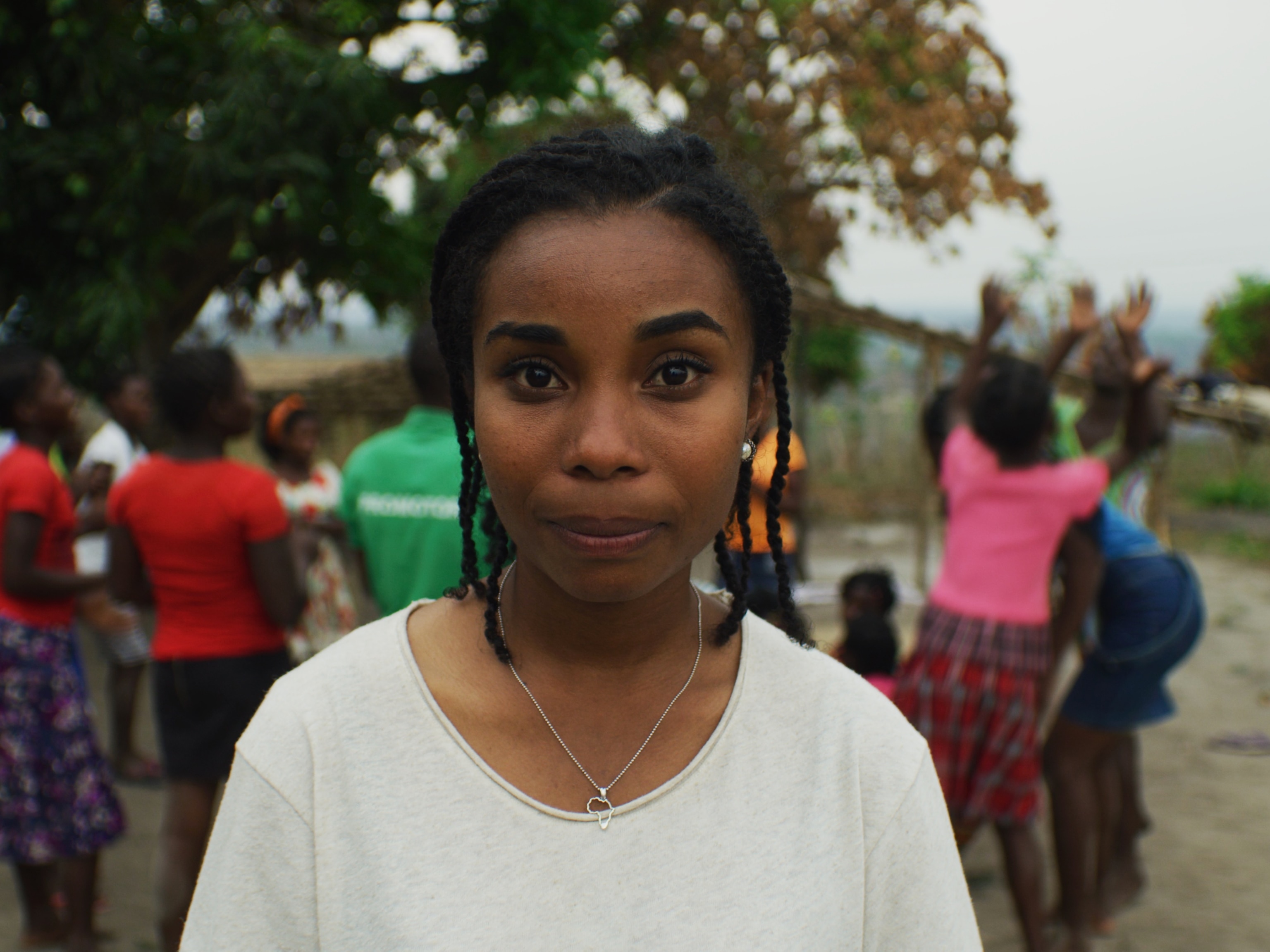Clare Fieseler: Taking a dynamic approach to marine conservation
National Geographic Explorer Clare Fieseler combines her journalistic and scientific prowess to identify environmental issues on the horizon and help detain them.
As a new college graduate, National Geographic Explorer Dr. Clare Fieseler spent days digging through video clips of Sylvia Earle, the sea exploration pioneer, in the old National Geographic archives.
Tape by tape, Fieseler plucked the best footage of the renowned oceanographer’s lifetime achievements, piecing together a highlight reel to catalog some of the 7,000 hours Earle spent underwater, exploring and protecting the ocean over the decades.
Today a journalist and conservation biologist, Fieseler says she wanted to be a scientist early on, but didn’t fully grasp what it meant when her career was still budding. Replaying the trail of milestones Earle cultivated beneath the waves demystified the image of a scientist for Fieseler, and propelled her forward.

“I was immersed in her world for a week making this video,” Fieseler remembers. She emerged from the project resolute: “I want to do this,” she thought.
Before leading ocean conservation efforts, Fieseler worked with National Geographic’s natural history filmmaking department where she learned about translating science as much as videography and storytelling.
“My life has been zigzagging between the start I got in media, and then back to science ever since,” Fieseler explains. And she’s been steadfast in keeping with both worlds in her pledge to help spot and solve environmental issues while they’re still emerging.
Her current research as the Smithsonian Institution's Justice Sandra Day O’Connor Fellow focuses on climate-threatened ocean habitats, their populations, and transboundary conservation. These issues are not only interesting data points for Fieseler: she also reports on them.
Her fascination for the ocean started with coral reefs. In 2011, Fieseler’s first grant from the Society supported a conservation project in the coastal area of Belize. She has devoted more than a decade to surveying coral resilience and telling visual stories about the ocean environments she works to protect around the Caribbean, and beyond.
As Fieseler’s career evolved, coral reefs were not alone in headlining as lifeforms at the mercy of a steadily warming planet. Her work transformed with the reality of growing environmental threats, to include stories of wildlife trafficking and gender rights in seafood.
“As times changed, I realized basically everything now is on the frontline of climate change,” she remembers. "I began to see other problems. There’s climate change but there’s also transboundary conflict.”
Fieseler has remained determined to get ahead on issues not making headlines. Her day-to-day work at the Smithsonian involves the examination of policy and data diplomacy as they relate to marine conservation, as well as a close study of marine mammal populations in climate-threatened regions, including the Persian Gulf.
Understanding the state of marine mammals in the Middle East is relatively new, Fieseler says, and her latest project, also supported by National Geographic, aims to uncover mysteries around the little-known history of dugongs, dolphins, and other mammals in the area by encouraging citizen science.
“What’s so fascinating about the Gulf is that there is just very little support for efforts that study marine life there. We didn’t even know that killer whales were there and they started popping up a couple of years ago. The place is full of surprises,” she explains.
Beginning in 2022, Fieseler will help train a group of Arab youth activists in Qatar to respond to the problem of marine mammal strandings, and help formalize the collection of data that can be shared across Gulf countries using app-based technology. Another component to the project will place Fieseler behind the camera, creating environmental portraits of the young activists to highlight this new kind of leadership arising in the region.
The possibility of cross-border dialogue around this work, in a place historically marred by regional rivalry, is another way science proves a powerhouse.
“Those political tensions are really softening now, and science is kind of this neutral space where countries and citizens can put aside their differences and work together,” Fieseler says.
The rise of the science diplomat, and general science diplomacy are other signs of optimism when it comes to transnational dialogue and conservation efforts, Fieseler explains, and she is committed to ensuring that women are at the center of efforts to engage policymakers and inspire future champions of science.
In 2018, Fieseler, along with fellow Explorer Gabby Salazar highlighted the stories of women defying the odds to become scientists in the documentary film Outnumbered, and in early 2022, the pair expanded their storytelling around intrepid women in the field with the release of a book aimed at inspiring the upcoming generation of scientists.
No Boundaries: 25 Women Explorers and Scientists Share Adventures, Inspiration and Advice, published with National Geographic Kids Books in February.
“It is my most proud achievement,” Fieseler says. Elevating the successes and raw realities of women in the field “encapsulates a lot of years” of her work, and is also personal.

Beyond Earle, the stories of inspirational female figures Fieseler could look to growing up were few and far between. Penning a resource where young girls could see themselves, and the truth of the challenges ahead of them, is Fieseler and Salazar’s attempt to fill that gap.
“We wanted to have these women represent every walk of science. We wanted diversity, not just racial diversity but cultural diversity, geographic diversity,” Fieseler explains. “We didn’t want to sugarcoat the STEM journey. Every story highlights how an explorer overcame obstacles and a lot of those are gender obstacles.”
The co-authors intend for No Boundaries to also serve as a roadmap for careers in science, which can at times look unconventional.
“There’s no one way to look like a scientist and you don’t have to start in high school. You have to be patient and you really do need to just start with what you have,” Fieseler reassures.
As for her own journey, Fieseler continues to pivot toward emerging problems, warning signs, and matters not yet taking the front page, whether in her reporting or conservation work.
She remembers her first ocean encounters along the New Jersey coast, where swimming conditions were unsafe during the worst of the area’s pollution crisis in the eighties—medical supplies washed up with the tides, and warnings of sewage detection in the Atlantic waters deterred beachgoers.
But today Fieseler’s coastal home, where Earle also first fell in love with the ocean, is restored. The oceanfront has become a hotspot for dolphin sightings, family gatherings, and an environmental success story that has kept Fieseler optimistic about the potential for nature to heal in other parts of the world.
“That’s always in the back of my head in my work,” she says. “Growing up on the Jersey Shore taught me a lot about what is possible.”
This hopeful outlook, persistence, and ability to spot problems on the horizon are approaches she hopes to impart unto aspiring environmental changemakers.
“There’s a lovely quote by Samantha Power which is ‘go where they’re not.’ And to solve problems, we have to take up those that don’t have champions yet,” Fieseler says.
“Pay attention to problems on the fringe, and if you want to help, sometimes go there.”
ABOUT THE WRITER
For the National Geographic Society: Natalie Hutchison is a Digital Content Producer for the Society. She believes authentic storytelling wields power to connect people over the shared human experience. In her free time she turns to her paintbrush to create visual snapshots she hopes will inspire hope and empathy.



